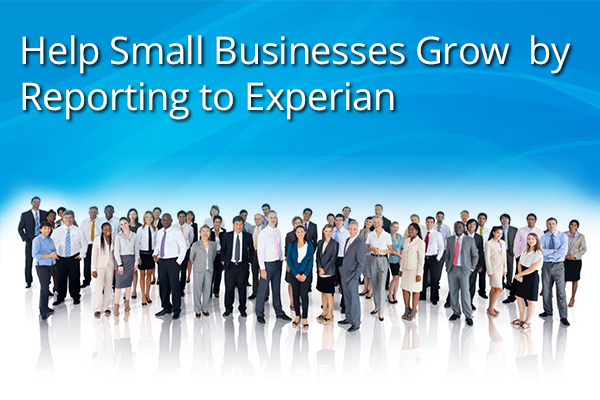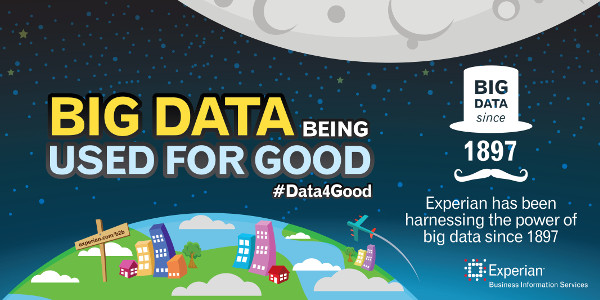Data and Analytics

Andrea Schmalzer is an analytical consultant in the Commercial Data Sciences team here at Experian, and she just completed a study of the mining industry titled "Managing volatility: the unique credit risks of the mining industry", so we did a quick Q&A with Andrea about her research. Gary: Hi Andrea, why did Experian study the mining industry? Have there been any notable changes to this industry in recent years? Andrea: Hi Gary. We decided to study the mining industry in order to evaluate the impact the mining industry has on small businesses that are supporting that industry. Knowing that there will be some volatility as we see shifts in which fossil fuels are predominantly being used. As far as changes go, we have seen a decrease in coal production. Some of this is due to the fact that we had the big boom in natural gas which caused the natural gas prices to decrease substantially. And also just due to the fact that the coal supplies are decreasing overall. Gary: Can you tell us what states driving the bulk of the mining in the United States. Andrea Schmalzer: So Texas is the number one oil and gas producers in the country. As far as natural gas we also had that being mainly produced in Pennsylvania and Oklahoma. For oil, we do see that being produced in North Dakota and California, and as far as coal mining goes that comes from Wyoming, Kentucky and West Virginia. Gary: Andrea what impact has the decrease in natural gas and oil production had on the local small business economy? Andrea: So, North Dakota was one of the most impacted states when the prices of oil dropped because they decided to stop drilling because it wasn't cost effective. So we did see employment drop quite a bit in the oil and gas industry. But overall as a state North Dakota is still under a 3 percent unemployment rate. Some of those folks are now working in retail or grocery stores, gas stations in hopes that new drilling will come up again. For businesses though we do see delinquencies shrinking in the retail segment also in the manufacturing segment. However we do see charge off's increasing for both retail and manufacturing which is one area we need to keep an eye on. Gary: With the falling supply of coal in West Virginia what trends are you seeing in business credit and delinquency? Andrea: Like you said we've seen a large decrease in coal production in West Virginia, most notably in the southern counties of West Virginia. And with that we've seen an increase in unemployment and in some cases an increase in delinquencies. For example the retail and service industries have seen an uptick in delinquencies in southern West Virginia compared to the rest of the state. But we aren't seeing write off's come through yet. So an area to keep an eye on. Also overall in West Virginia we do see higher delinquency rates in the agricultural industry for the coal counties versus non-coal counties. But again, like retail and service we aren't seeing the write the off's come through yet. So definitely an area we need to keep an eye on. Download Whitepaper

One of the world's largest financial institutions, Citi is determined to keep pace with rapid changes in international commerce. As detailed in the April 2017 issue of PYMNTS.com's B2B API Tracker Citi believes APIs – Application Programing Interfaces – are the key to getting international businesses the financial information they need to prosper. "We realized [our] clients were getting into newer business models which require faster access to payments [and] faster access to information," Mayank Mishra, managing director and global head of channel services for Citi treasury and trade solutions, told B2B API Tracker. "We had to go with a standard that was well-accepted by clients so they wouldn’t have to go through massive infrastructure changes." He noted the company's heavy investments in APIs will give its customers "the flexibility they're looking for to access the relevant information they want." Like Citi, Experian is eager to serve clients in a nimble, open fashion. To address this need Experian has created an API Developer Hub. Found at developer.experian.com, the Experian API Developer Hub is poised to expose the company's deep and detailed data on businesses and consumers, in addition to Experian’s automotive, health, and decisioning services in both the US and across the globe to the developer community. The API Bonanza Although they have been around for years, APIs have recently garnered lots of attention from companies of all types and sizes. "APIs are a technology exposed over the web that allow applications (software programs) to talk to one another," explained Mike Myers, Experian's Senior Director of Product Marketing. "APIs provide software developers with instructions on how to easily access and integrate data that can help fast track new ideas, partnerships, and innovation." Myers leads a team that creates business information APIs for the API Developer Hub, giving developers easy access to Experian's business information to use as they see fit. Laid out simply and intuitively, the Developer Hub serves as an easy-to-use "window" through which users can see: The depth and breadth of information Experian can provide to them How to acquire this information in a form most useful to their company How this information can be easily requested and consumed Serving Both Established Core Customers and Aggressive Start-Ups Myers explained that there are two principal markets for the new API Developer Hub: Mike Myers Experian AgileWorks "The first is our core customers, mainly financial institutions, insurance companies, trade credit, credit managers – basically the user who needs to integrate Experian data to determine their customers’ status, needs to reduce friction and minimize risk when making credit decisions as well as satisfy compliance regulations. This use case has been our bread and butter for decades," Myers said. "They need to manage risk. They must ensure their operations are in compliance. And, perhaps most importantly, when issuing credit, the likelihood that they’re going to get paid. That’s really the bottom line and is a key issue our API developer portal is designed to address." The second use case is designed for the developer community. “Developers are working for companies of all types and sizes that have yet to experience the power Experian’s data assets can deliver. They may share similar needs to our core users, but they most likely also have completely different market problems which Experian data can help solve. Maybe it’s a subset of our data applied to a new use case or maybe it’s combining our data with other data in new and innovative ways.” Experian designed the API Developer Hub to be as user-friendly as possible. New accounts can be setup in minutes. "It's taken a historically offline process and converted it to real-time” Myers said. Developers can explore a host of options, including access to APIs for Business Search, Business Credit, Commercial Public Records and Business Compliance Insight. We don't know what new apps or offerings will appear because of this new venture, but with the amount of energy, imagination and innovation driving today's tech world, we suspect that through APIs, developers will enhance the power of companies -- and consumers -- in ways we can't yet even imagine. We are proud -- and thrilled -- to be contributing to this ongoing revolution. Experian Developer Hub

Reporting business data to Experian is an important and essential part of the credit ecosystem. Data provides a more complete credit history and in turn helps small businesses grow. Small businesses that have limited tradelines can sometimes face difficulty qualifying for loans and getting access to capital, so lenders and commercial trade partners who report data to Experian are giving small businesses the credit they deserve. How to report data to Experian You can start the process of reporting data to Experian by following a simple 8-step process outlined in this video. Our data acquisition specialists are standing by to help onboard new business data contributors and can answer questions to make it a seamless onboarding experience. You can also find more information on our data reporting page experian.com/datareportingbusiness. We have also created a handy Infographic which describes how to contribute both consumer and small business data. Get Started Reporting to Experian

According to the U.S. Small Business Administration (SBA), small businesses account for 99.7 percent of U.S. employer firms and 64 percent of new private-sector jobs. So it stands to reason that the way small businesses go, the economy probably follows suit. One of the biggest challenges for small businesses, however, is the ability to access capital. In order for them to grow, they need money. Many of these smaller firms have limited to no credit history on file. For that reason, it is imperative for lenders and trade creditors to leverage comprehensive data sources (both financial and non-financial), enabling them to make smarter business decisions and help small businesses access credit. It is Experian’s core belief that an open and secure data sharing program is crucial to helping small businesses get the credit they deserve, and it's Small Business Credit Share® program is at the center of this ideal. Small Business Credit Share℠ is a Credit Data Sharing "Club" Small Business Credit Share℠ (SBCS) is a consortium of banks, credit card companies, leasing agencies and other companies that have agreed to provide financial and non-financial data in exchange for exclusive access to data from other contributors. By gaining access to this database, lenders and trade creditors can make more informed decisions, while also promoting financial inclusion and spurring growth within the small business segment. Currently, six of the nation's top ten financial institutions are members, as well as several telecommunications and utilities companies. Small Business Credit Share℠ offers more aggregates (data elements) than any other service of its type. Whereas many lenders rely primarily on summary data (e.g., a credit score and reports of missed payments over the past year), Small Business Credit Share reports include a vast array of detailed credit, financial and non-financial data. As a requirement of membership, members must contribute at least 10 pieces of data on each small business account, such as account types, highest credit utilized, total account balance and payment history profiles. Together, these aggregates provide a much deeper, more meaningful view of a small business than was ever possible when drawing from just a handful of sources. They have also proven to be a far more accurate predictor of credit risk than any other service Membership Provides Benefits to Financial Institutions and Borrowers Alike Small Business Credit Share℠ provides significant benefits to member institutions as well as to the customers they serve. For example, Small Business Credit Share allows members to see the obligations an applicant already has to other lenders. With this knowledge, a lender can make sure an applicant does not become overextended and thus jeopardize their ability to pay back the loans already outstanding. A lender can also generate reports that, when shared with a customer, help ensure that paying back that lender becomes a priority so as to strengthen their credit score. Small Business Credit Share can also help members achieve SBA compliance, as the SBA mandates reporting to "bureaus" for all SBA-backed loans (SOP 50 57). To Get More, Give More As in life, what you can get out of the Small Business Credit Share℠ tends to be directly proportional to what you put into it. The more data members share, the clearer the picture of their small business borrowers becomes, and the smarter credit decisions they are able to make. Watch our Small Business Credit Share Program Overview Video We're encouraged by the overwhelmingly positive reception the Small Business Credit Share has received from the financial industry as a whole and from our member companies in particular. We remain committed to the idea that financial inclusion provides a strong value proposition to the Financial Services community, and believe Small Business Credit Share aligns with that ideal. Small Business Credit Share

At the recent “Future of Data-Driven Innovation” conference, Emery Simon of the Business Software Alliance noted that each day 2.5 quintillion bytes of data is gathered. How much data is that exactly? To put it into tangible terms, if this data was placed on DVD’s, 2.5 quintillion bytes would create a stack tall enough to go from Earth to the Moon. As Experian’s CEO, Craig Boundy recently blogged, at Experian, we have deep experience harnessing the power of data, in fact; we have been doing it since 1897. Using our insights to help merchants and consumers by providing an annual credit reference directory, we were using “Big Data” before it became a buzz word. You can read Craig’s blog post here. But let’s talk for a moment about the economic impact Big Data can have on society. A recent McKinsey report estimates that improved use of data could generate $3 trillion in additional value each year in seven industries. Of this, $1.3 trillion would benefit the United States. “Improved use of data could generate $3 trillion in additional economic value each year in seven industries.” McKinsey report: Open data; Unlocking innovation and performance with liquid information As consumers, we see the power of Big Data everywhere these days. Local and State governments are using data to tackle policy objectives like kick starting their economies and driving down crime-rates. In health care, Big Data is being used to reduce infant mortality. Researchers analyzing large data sets of vital signs from premature born babies discovered that whenever the vitals seem to stabilize, there is a high probability that a baby will suffer from a dangerous infection just a few hours later. Stable vitals are red flags, and recognizing them enables doctors to treat an infant before the full onset of the infection. And public health agencies are predicting and managing emergencies from the flu to Ebola with big data algorithms. HealthMap.org is an innovative mapping website that uses algorithms to scour tens of thousands of social media sites, local news, government websites, infectious-disease physicians’ social posts, and other sources to detect and track disease outbreaks. When healthcare workers in Guinea started to see patients with Ebola-like symptoms and blogged about their work, a few people on social media mentioned the blog posts. These blog post mentions were picked up by Healthmap. The result, an algorithm using big data told the story of a looming Ebola outbreak nine days before the World Health Organization formally announced the epidemic. Google can predict the spread of the flu, not through mouth swabs or by interviewing doctors, but simply by analyzing billions of search terms they receive from users of their search engine every day. The city of Syracuse, New York wanted to understand why certain neighborhoods declined over time. The city was struggling with abandoned housing, a phenomenon that is often associated with crime, poverty, and health issues. Analyzing local education, social services, economic, real estate, and police data, the city of Syracuse worked with a team of IBM Big Data analysts who demonstrated that certain trends can presage a decline in public safety, property value, and small business growth. Big Data applications in business In 2008 Starbucks CEO, Howard Schultz was forced out of retirement to get the company back on track after closing hundreds of under-performing stores. Starbucks now employs a disciplined data-driven approach to store openings by using Esri’s ArcGIS Online software, a sophisticated mapping platform which blends maps with demographic data. Starbucks can now pinpoint where their new stores should open, where they can be the most successful. Big Data correlations help Amazon and Netflix recommend products to their customers. In automotive manufacturing, predictive maintenance based on Big Data correlations enables companies to predict when a car engine part needs to be exchanged before the part actually breaks. In computer distribution, algorithms which analyze buying trends and payment data from millions of transactions can pinpoint the segment of customers who will soon stop buying. Identifying this cross-section of soon-to-quit customers enables sales organizations to proactively ramp up customer retention strategies to mitigate the risk of lost business. This helps our economy and our businesses thrive. In agriculture, there are companies and universities blending hardware with big data. Apple farmers in the Midwest are using bug traps fitted with sensors that can identify specific types of bugs in the trap. The traps are connected to the Internet in a data portal that the orchard manager can see where an infestation begins and stop it in its tracks. Being able to turn insights into action, farmers can use data analytics on bug infestations to use fewer pesticides, grow their crop more consistently and more profitably. Big data delivers tangible savings to tax payers The U.S. voter registration system is a challenge to manage. List maintenance can be difficult, and the system needs an upgrade. An inaccurate voter registration file can cost the government between $1 and $2 per year. For a state with 5 million voters, this could mean a cost of $0.5 to $2.5 million per year or more in additional costs, depending on the actual condition of the voter file. Orange County, California was able to update more than 297,000 voter records using information from TrueTraceSM, one of Experian’s most powerful data hygiene products. It draws from Experian’s core consumer credit database of more than 220 million consumers and 140 million households, as well as access to 100 million wireless phone numbers. Orange County saved over $44,000 in the first election alone – savings that will grow with each passing election as the county avoids mailing materials to out-of-date addresses. There are a lot of things to be excited about in the realm of Big Data. As Julie Brill, Commissioner of the Federal Trade Commission remarked at the recent Future of Data-Driven Innovation conference, “The data driven economy will not thrive unless the bits of consumer information collected and analyzed are used to benefit the consumer – plowed back into the relationship between businesses and their customers to make it stronger, deeper, and ultimately more profitable.”

Hello, I’m Hiq Lee, president of Experian’s Business Information Services, and I’d like to talk to you about how we are using data for good to help companies, large and small, succeed in the marketplace. At Experian, our group plays a crucial role in the big data ecosystem as an enabler of commerce and insights for the business community at large. We deliver unbiased information on more than 25 million active U.S. businesses, plus our international data capabilities, enable our customers to make more confident decisions on companies overseas. In 2012, along with Moody’s Analytics, we developed the Small Business Credit Index, which provides a unique perspective on the health of small businesses in the United States. The report contains important trends on bankruptcy rates, delinquencies, and overall payment behavior, as well as macro-economic information. This deeper look at the business landscape helps financial institutions and businesses every day to make sound lending decisions, gain key insights on business credit health and prospect for the right customer. At Experian, we are committed to delivering quality data and are strategically focused on the innovation of new and advanced products and services that enable businesses to thrive. Whether it’s analyzing millions of business credit transactions to generate industry-leading commercial credit scores and business credit reports, or safeguarding and securing millions of records to protect businesses and their customers from fraud, Experian is at the forefront of big data, driving value for our customers the world over. For Experian’s Business Information Services, using our data for good means constantly innovating and looking for ways to benefit businesses, as well as consumers and the overall economy. Related Data Is Good - Analytics Make It Great - Craig Boundy, CEO
